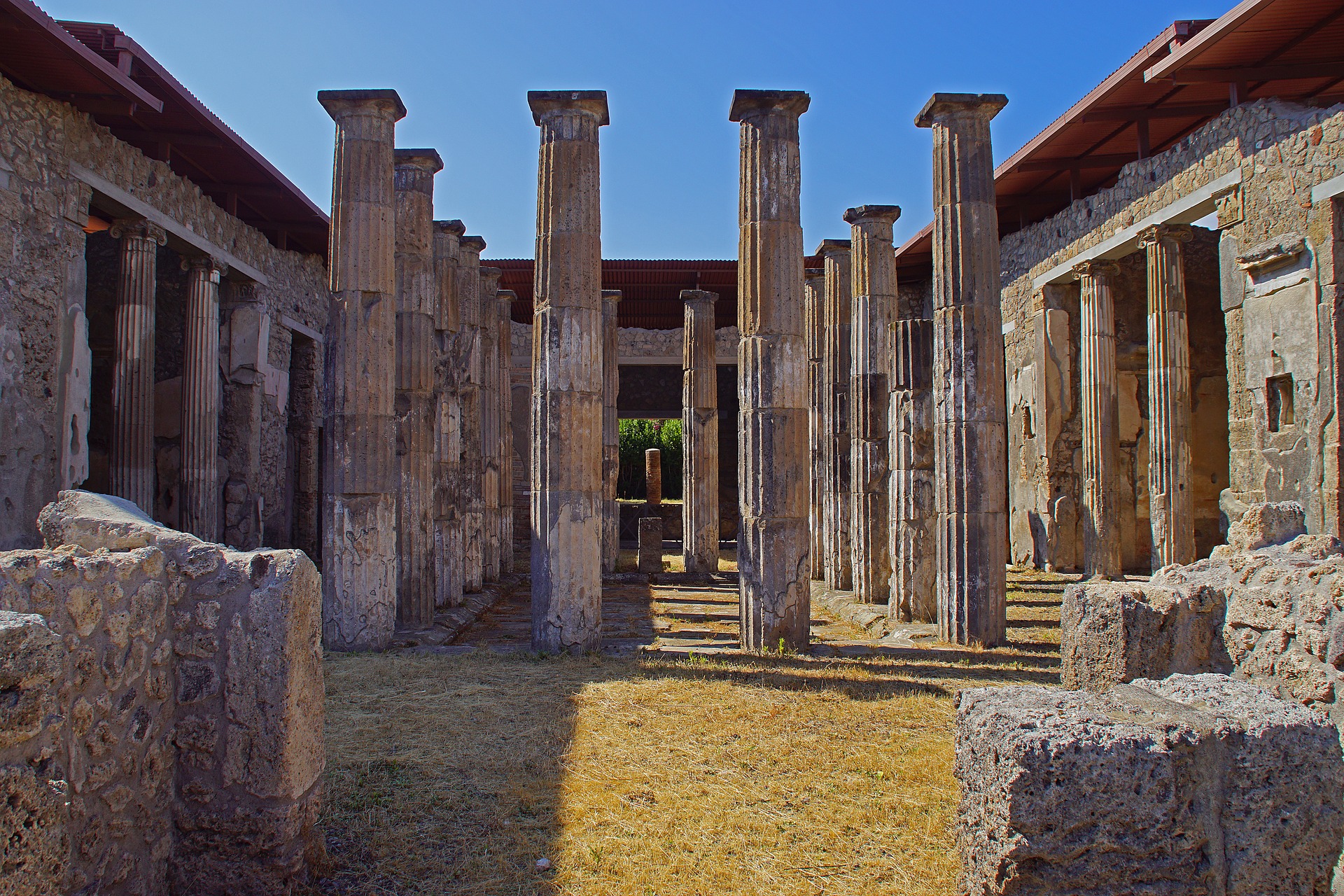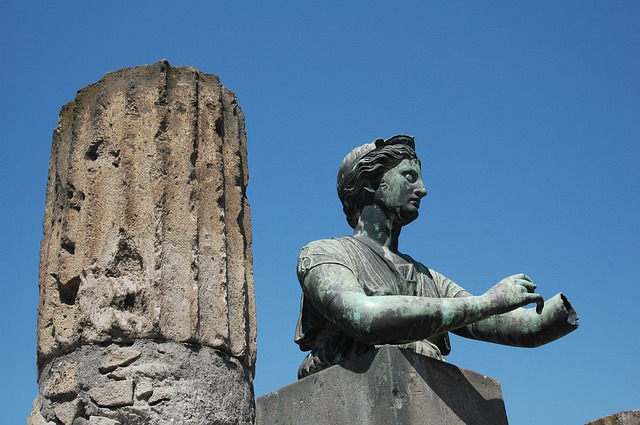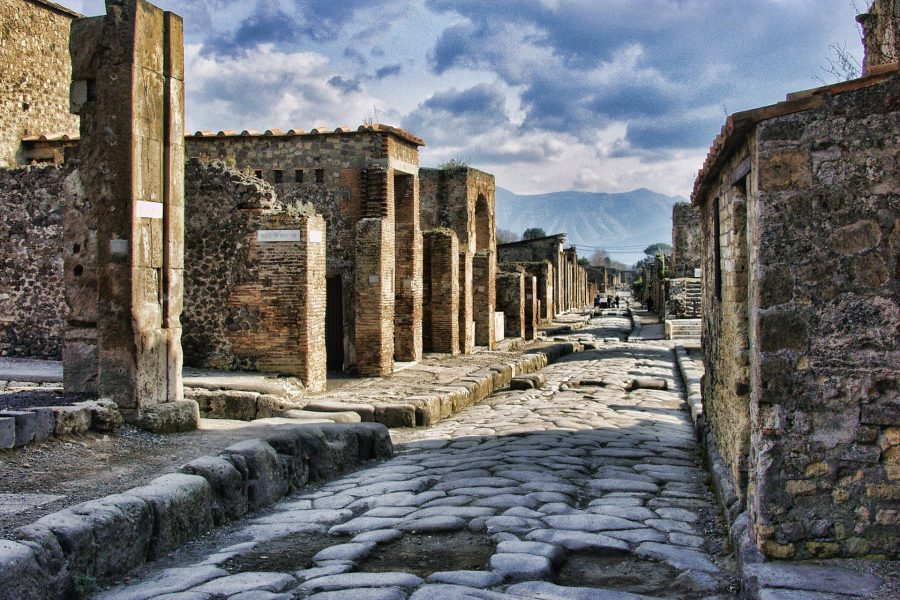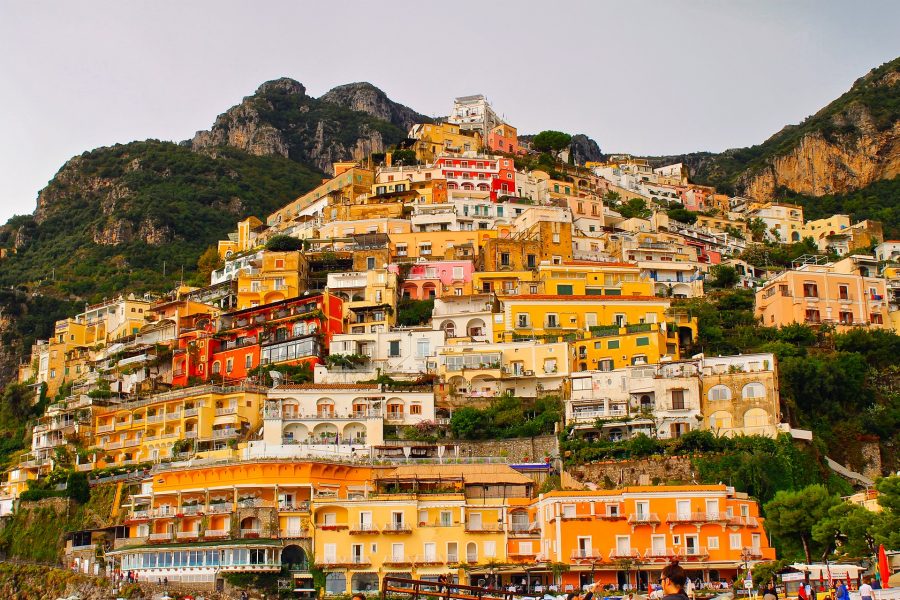The devastating destruction of Pompeii is one of the most famous natural disasters in history. Which involved the still-active Mount Vesuvius destroying an entire city and burying it under layers of dirt and debris.
The City of Pompeii
Pompeii was a thriving city back in ancient times, being a prosperous trading city and the go-to holiday spot for wealthy Romans. Boasting rich exotic foods, fashion, and art, the city was famous for its exotic treats and its local produce due to its volcanic soil. The people of Pompeii were of typical Mediterranean complexion, featuring dark hair, dark eyes, and bronze skin. However, due to the city’s constant trading, 30% of the population were foreign slaves, who varied in complexion most typically being pale and blue-eyed. Due to the local Pompeii people finding the pale skin and light hair appealing, the fashion changed to help achieve this look, most predominantly for Pompeii women. Wearing wigs, bleaching hair and powdering their skin with white powder. Fashion, power, and wealth were all very important in Pompeii, with many of the local’s adorned with wealthy decor.
The Eruption
The catastrophic volcanic eruption fell in the year 79 A.D. Back then, Mount Vesuvius was only thought to be a large mountain, with the Romans not even having a word for volcano at the time. According to legend, the citizens of Pompeii were met several earthquakes prior to the eruption. Due to earthquakes being a common occurrence at Pompeii, the citizens went about their day, as usual, unaware of the dangers which were to come. The first wave of danger that startled the Pompeii people was, in fact, a massive explosion of a large cloud of smoke, that stretched up 19 kilometres high over Mount Vesuvius. Eventually, the large cloud began to rain down on the city, with large bits of debris and ash dropping down onto the buildings and people. These large hits of debris collapsed buildings and left many of the people to be buried by the raining stone and falling fire. Next, was the continuous waves of ash known as the ‘pyroclastic flows’, which swept out across the city. These flows were lethal, containing toxic gas that was up to 700 degree Celsius, leading to anyone caught in these flows to burn alive. Due to the waves being faster than 700 kilometres per hour, many of the citizens running on foot were hit.
Were there survivors?
Archaeologists who have studied the remains of Pompeii for centuries now and have concluded that roughly around 20,000 people were living there at the time of the eruption. However, it is estimated that only 2,000 people died in the eruption, with the majority of the citizens escaping in time. From studying the bodies who perished in the eruption, historians have gathered that majority of the poorer citizens did not escape in time, as they either had nowhere else to go or didn’t have the money to leave. However, as there aren’t many documents on the event, it is still not known who actually survived the disaster.




